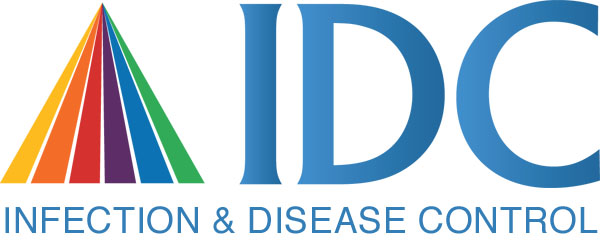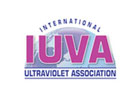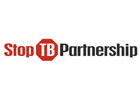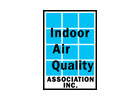Below are some frequently asked questions about the IDC product family. For more information on the science behind UVC disinfection please visit our American Air & Water FAQ page.
1. Why is UVC disinfection necessary?
All medical facilities and other clean environments have procedures for disinfecting surfaces, and many have devices for disinfecting the air. But, recent statistics show that despite the procedures and devices, the occurrence of healthcare-acquired infections (HAI’s) is on the increase, with more people getting sick and dying from preventable diseases. Statistics from just the medical industry tell the story:
- Healthcare-Associated Infections (HAI’s) cost US hospitals over $30 billion annually. (CDC)
- Just 5 of the more common HAI’s occur in an estimated 440,000 cases annually and cost the US nearly $10 billion, or just over $27,000 per case. (JAMA Internal Medicine)
- An estimated 1.7 million preventable infections are acquired by patients during a hospital visit or through contact with hospital staff. (CDC)
- The numbers of infections and deaths from C. Diff have risen more than 5 times in seven years, and are now at over 130,000 cases per year. (CDC)
- An estimated 90% of all colds are caught indoors. (EPA)
A single touch, cough or sneeze will instantly spread millions of germs. Healthcare workers simply cannot keep every surface continuously clean throughout the workday. IDC is a smarter, cleaner and easier way to increase disinfection security added to any protocol.
2. How does ultraviolet light kill infectious diseases?
Germicidal UV at 254 nanometers wavelength is proven to be very effective in inactivating and killing microorganisms. The UV dose is determined by both exposure time and UV intensity. Adjusting the UV intensity and/or exposure time ensures that an effective UV dose is delivered to the germs.
3. Why are both direct and indirect modes important?
Direct UVC irradiation delivers germ-killing UV light to all exposed surfaces and the air in the room. The indirect irradiation mode conceals the UVC lamp so that only the recirculated room air is exposed to UV light. While duct-mounted UVC devices disinfect incoming air, they do not disinfect room surfaces. The optimal solution is a system that automatically switches between direct exposure for surface disinfection when the room is unoccupied, and indirect exposure for air disinfection when the room is occupied.
4. How does IDC's UVC light affect other materials?
Long-term exposure of certain polymer-based materials such as plastics, some fabrics and some pigments to UVC light can cause premature fading and aging. By utilizing the indirect mode the IDC limits the long-term exposure.
5. What effect does long-term UVC exposure have on humans?
Even though germicidal UV does not cause any permanent effects in humans, people must not be exposed to UVC light. The safe UVC dose, specified by The American Conference of Governmental Industrial Hygienists is 6mJ/cm2. IDC is the only UVC system to automatically switch from direct to indirect mode when someone enters the room, thus protecting from overexposure, while providing continuous disinfection.
6. How does IDC fit within the range of other disinfection methods and protocols?
IDC is the heart of any disinfection process. Healthcare facilities must comply with strict regulations and IDC is not meant to replace the cleaning and disinfection protocols. However, IDC offers an exponential improvement to the effectiveness of existing disinfection methods because it works around-the-clock. All surfaces exposed to UVC light in the room can be disinfected. This includes counters, table tops, door handles, bedrails and other high touch surfaces. IDC provides continuous direct or indirect irradiation throughout the day with no off-gas or harmful corrosive effects.
7. What makes IDC meaningfully different?
There are many different kinds of UVC disinfection systems, most of which are mobile devices that must be moved from room to room and placed in storage when not in use. IDC is the only smart UVC lighting system providing both direct and indirect irradiation, and working around-the-clock 24/7/365. No other device can offer the same level of convenience and disinfection efficiency on a continuous basis.
8. How are IDC units used?
IDC units take the place of existing lighting fixtures. Each IDC unit automatically provides maximum disinfecting UVC energy to inactivate pathogens and high quality tri-color fluorescent light for high energy efficiency lighting. Visible lights are controlled as usual at the wall switch, and may be dimmable when necessary.
9. How are IDC units installed?
IDC units are installed like traditional lighting fixtures, either surface-mounted, laid into a tiled (tegular) ceiling grid, or suspended pendant-style from the ceiling. While most fixtures are intended to be hard-wired, a plugged option is also available. No control wiring is necessary. Each IDC unit communicates wirelessly with the safe and simple IDC App that enables system setup, lamp maintenance, and data collection.
Wall mounted fixtures may be installed at any height using keyhole slots and either plugged into electrical receptacles or wired directly. TB units may be recessed into the wall.
10. What training is required to use IDC?
Very little. Setup is intuitive and simple using the IDC App for Android or iPhone. Once installed and setup, IDC operates continuously and quietly with no employee involvement. The system tracks and records when it is providing direct and indirect irradiation of the room. It notifies the IDC App when it is time to replace the lamps.
11. What maintenance does IDC require?
IDC requires very little maintenance. The IDC App keeps track of how many hours your lamps have operated and tells you when the lamps should be replaced. The lamps and air inlets should be occasionally wiped with a clean cloth to eliminate dust, and the air filters should be rinsed and dried occasionally. Replacement air filters are available from American Air & Water, Inc.
12. How can I get an IDC system?
IDC is sold exclusively by American Air & Water, Inc., who have been in the UVC industry for over 20 years, have two GSA contracts, and have tens of thousands of UVC units installed worldwide. Contact us to discuss your specific project.








